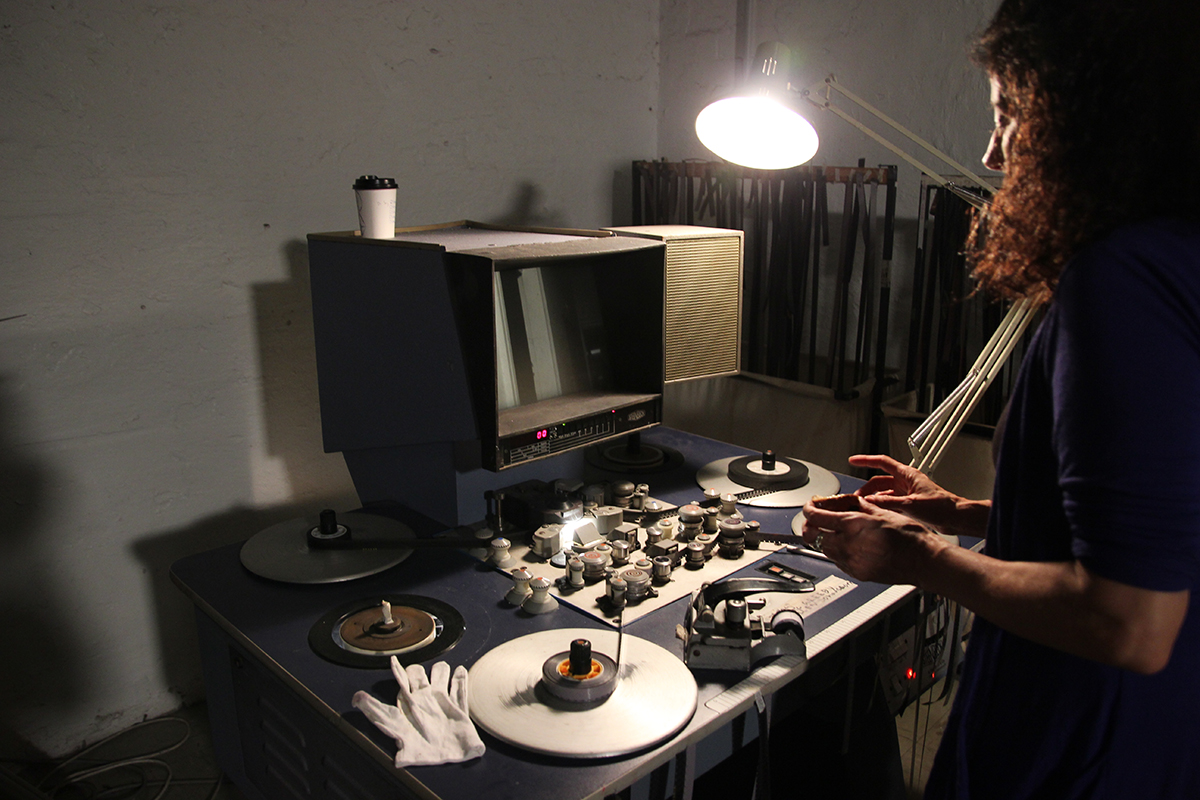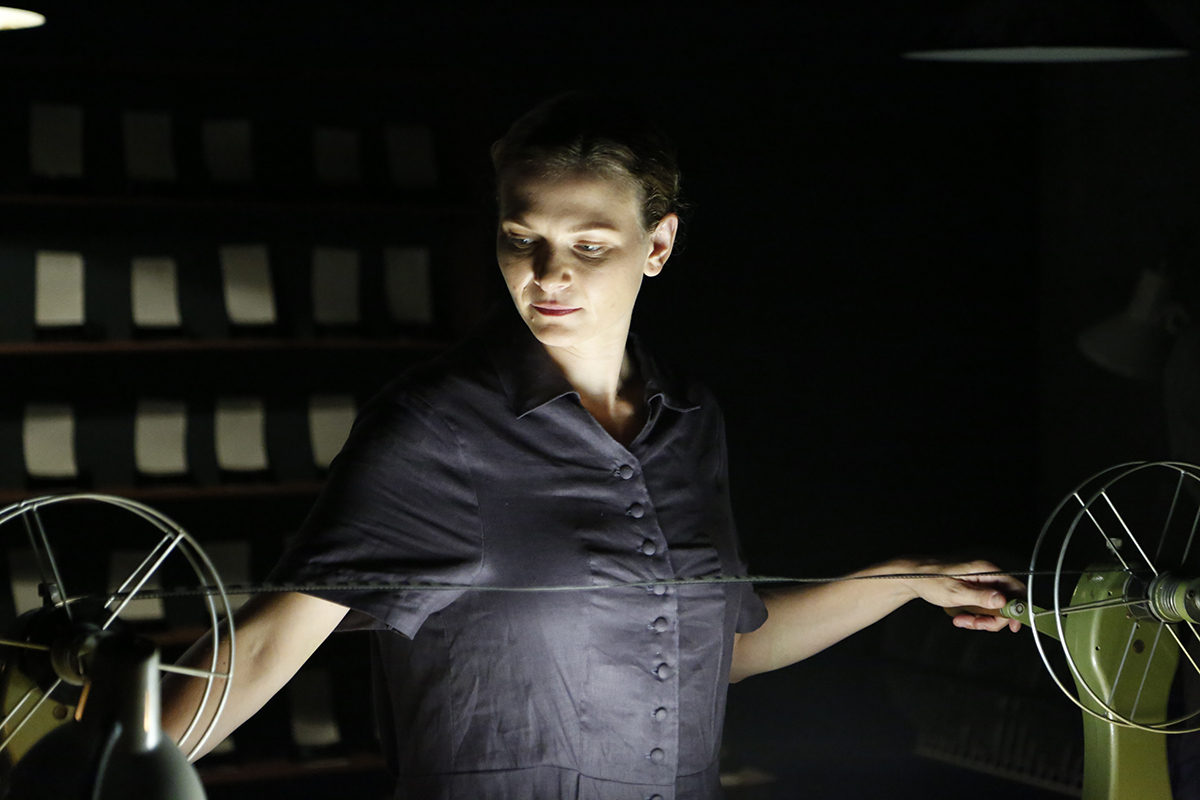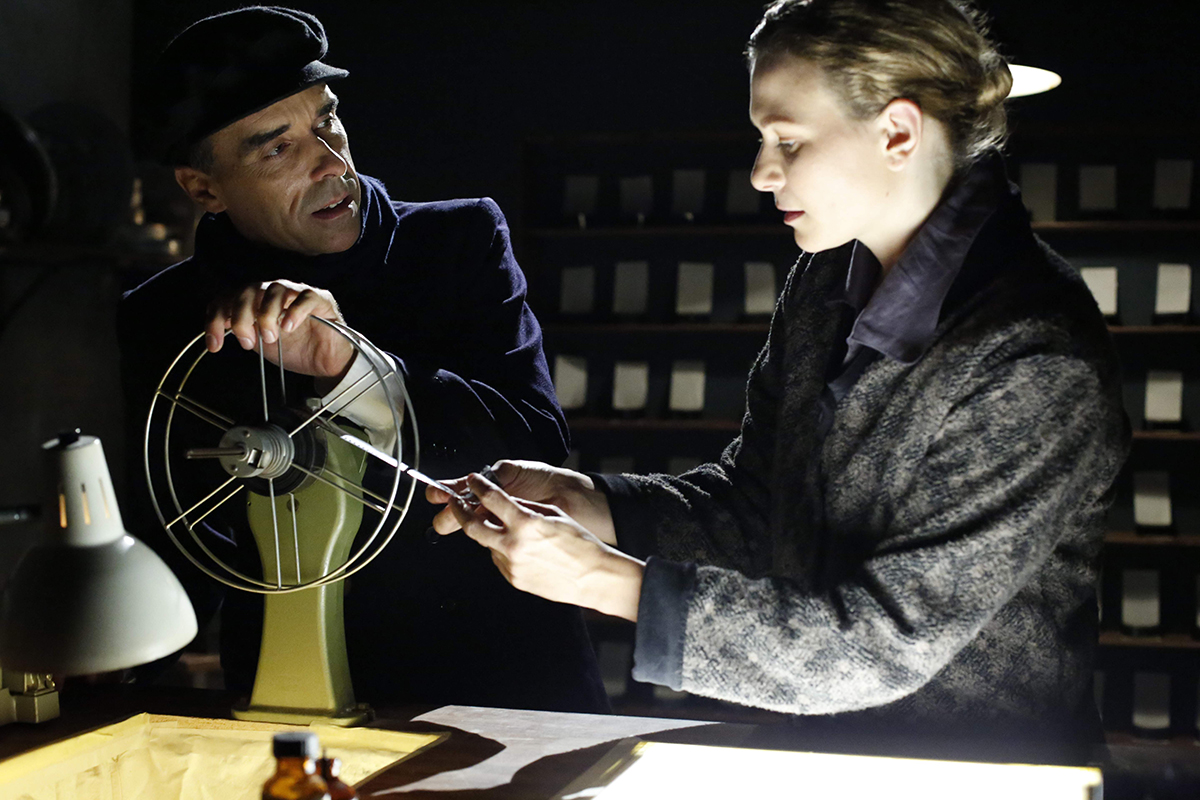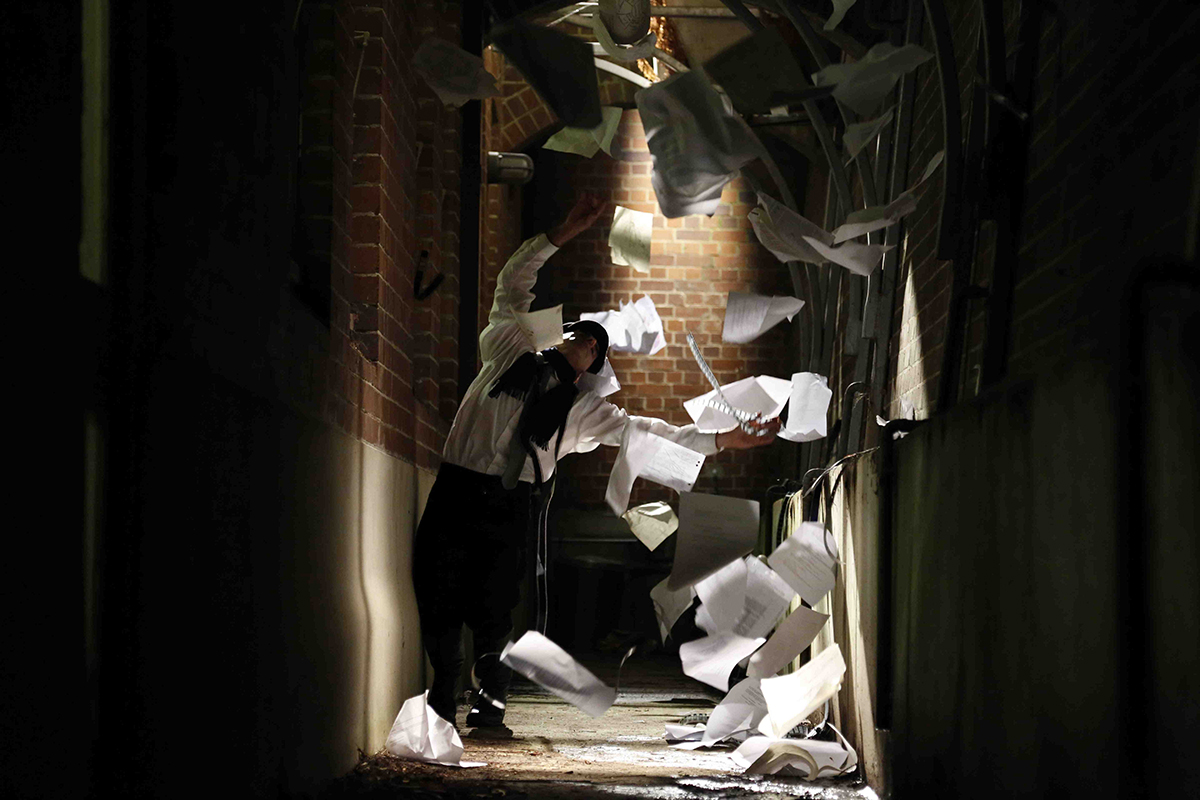
Woman with an Editing Bench: How do film editors think?
How do film editors think? Dr Karen Pearlman’s new short film, Woman with an Editing Bench, is a 15-minute biopic about Russian film editor Elizaveta Svilova, unsung creative collaborator on the classic essay documentary Man with a Movie Camera (1929). That film’s pioneering approach to the storytelling strategy of montage has become a pillar of film theory, but Svilova’s contribution has been eclipsed by those focusing on director Dziga Vertov. Though it’s alarming to think that a woman’s role has been historically so under-credited, Woman with an Editing Bench does more than reclaim a piece of cinema’s founding story: it aims to understand editors’ broader role in the process of co-writing and producing films.
A key scene in the film shows Svilova (Leanna Walsman) and Vertov (Richard James Allen) working furiously and collaboratively: cutting and recutting celluloid strips of film, scrawling diagrams that block movement and key plot points, and redrafting scenes together, on-the-fly. From two minds a new kind of film emerges, Man with A Movie Camera.
Film as research
Where Woman with an Editing Bench differs from most other new short films is that it also qualifies as an original contribution to scholarly thought, having been produced through Macquarie University’s Creative Ecologies Lab, a haven within the academy for around 20 artist-scholars working in dance, performance, music, creative non-fiction and film. “Woman with an Editing Bench is a creative research output at Macquarie University, which put substantial funding into it as well as providing the studio, camera, the lights, the technical facilities,” says Pearlman. “Where I teach Screen Production is the old AFTRS building. So we have these fantastic, world-class facilities for creative research and practice. Parts of the facilities are reserved for the student and staff researchers.”
Pearlman’s own path through academia is that of an artist-scholar. She came to Australia from the US as a dancer, but “pretty quickly realised that my entire cultural context and history in New York was not going to work here. I retrained and did two Masters degrees in editing and production and a Doctor of Creative Arts in about seven years.” The book resulting from her doctorate, Cutting Rhythms: Shaping the Film Edit, is in its second edition through Focus Press, and Pearlman is now a lecturer teaching filmmaking in Macquarie’s Screen Practices and Production course, after having spent six years at AFTRS as head of Screen Studies. Continuous throughout all her work is the idea that a well-edited film is a film that moves well.

Leeanna Walsman, Woman with an Editing Bench, photo Kieran Fowler © The Physical TV Company
Editing as distributed cognition
“It can’t be just a good film,” says Pearlman of her approach to making cinematic projects within the university structure. “It has to make a new contribution to knowledge. So there’s been a whole lot of research questions that have led to Woman with an Editing Bench, and one is around distributed cognition. It says that you don’t just think in your brain, you think in your brain and your body and in the world, and that cognition is distributed and felt and intuitive, and it’s not just reasoning: it’s thought and action together. So I’ve been looking at film editing as an instance of distributed cognition.”
For Pearlman’s research, that meant asking: how does the editor think through the process of editing? “And how does the film think with the editor and how does it change? The editor doesn’t make any decisions apart from the filmed material. The thinking is integrated with sourcing, selecting, trimming, composing — it’s thinking with the material, it’s thinking in practice.
“I started looking at the historical record of Dziga Vertov and his editor Elizaveta Svilova through the lens of distributed cognition. Using the film Man with a Movie Camera, my claim is that I can use Svilova’s techniques to reveal her thoughts. Dziga Vertov is well documented. He gave interviews, he wrote a lot, you can have a career as a Vertov scholar. But Svilova’s thoughts are virtually undocumented. But fortunately what we do have is Man with a Movie Camera. We can see what her processes are — literally what actions she was taking as an editor, and can say, that’s her thinking. I brought her clips into my editing software and analysed them frame by frame, looking for her sense of rhythm and juxtaposition, the structures she designs, the way she shaped the flow of the story, the strobing technique that was so hard to achieve back then [with analogue technologies].”

Richard James Allen, Leeanna Walsman, Woman with an Editing Bench, photo Kieran Fowler, © The Physical TV Company
In other words, Pearlman found Svilova’s blueprint. “In the creative process, I’m embodying Svilova’s process, I’m thinking with her thinking. So my claim is that Woman with an Editing Bench recuperates her thoughts and puts them onscreen and that’s the new knowledge it contributes. The filmmaking has absolutely confirmed my hypothesis that editing is an instance of distributed cognition.” The lessons learned in the process of crafting her film have now created new pedagogical tools that Pearlman builds into her teaching in the university’s screen studies course. She’s since written a book chapter and several peer-reviewed papers on the subject of editing as distributed cognition, and the research is ongoing, with further films to come.
In this sense, Pearlman’s output reveals an important function for creative practice in universities: to test the theories that are developed in scholarship about how meaning is created in film, images and sound. The film resulting from this process is very different in feel and form from the short films coming out of Screen Australia’s short film funding programs, and has screened at international film festivals, been collected for research and preservation by 10 international film archives and acquired for educational distribution by Ronin Films.

Richard James Allen, Woman with an Editing Bench, photo Kieran Fowler © The Physical TV Company
Creative works are questions
But how to make short films that function as both a piece of creative research and a complete artwork to viewers who aren’t approaching them academically? “At a basic level, all creative works are questions. If you already knew the answer, you wouldn’t make one. You’re not going to remake the thing you made last year. So in creative practice research, you have a chance to articulate those questions in a really rigorous and sound way. I worked as a dancer for a long time, and for choreographers, there’s no requirement that they articulate what they’re trying to do. Not everybody needs to do it this way, but for me, it’s incredibly enriching and enlivening for my practice to do research and to theorise it — thinking about editing, thinking about history, thinking about film, thinking about women, thinking about cognition. It’s wrong to think that theorising your work will interrupt your intuition. Intuition is richly valued, and so is scholarly enquiry.”
Read about screen and other courses available in Macquarie University’s Media, Creative Arts & Communication department.
–
Woman with an Editing Bench, writer, director Karen Pearlman, director of photography Kieran Fowler, production designer Bethany Ryan, costume designer Anna Cahill, editor Karen Pearlman, music Caitlin Yeo; 15 mins, Physical TV Company, 2016
Woman with an Editing Bench is available for DVD purchase and Vimeo streaming through both Ronin films and Kanopy. It’s screening this Wednesday and Thursday at Brisbane International Film Festival and 2nd September at Cinewest’s 4th Women Media Arts and Film Festival. Watch a trailer here.
Top image credit: Karen Pearlman, photo by Samuel Lucas Allen






